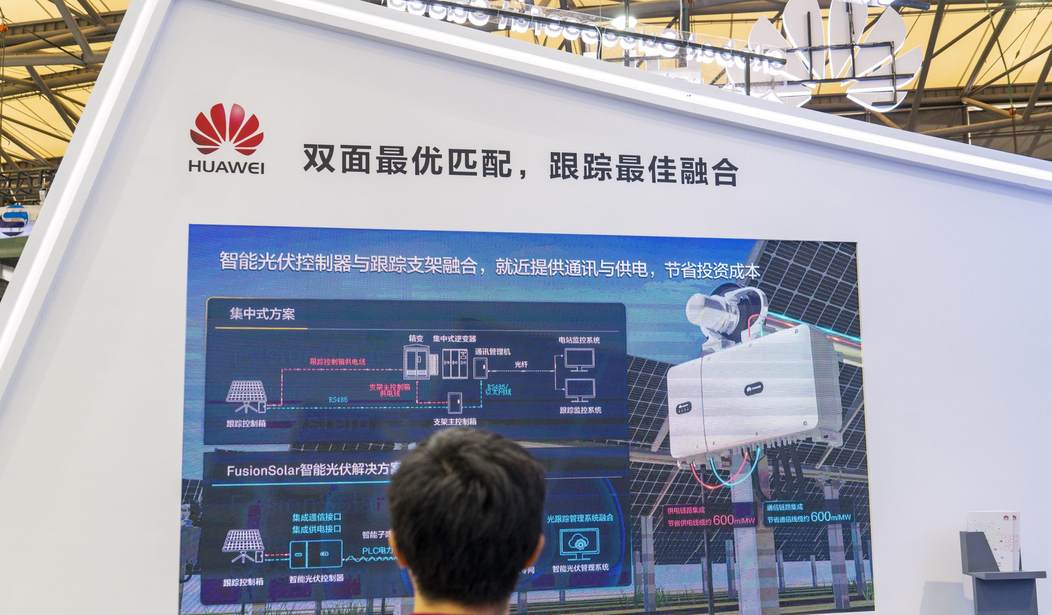America is stumbling into a trade war with China that just might undo most of the good that the Trump administration has done for other parts of our economic policy. Yes, China is a huge threat to the United States. I’ve been shouting this from the rooftops for the past five years, while the neo-conservative conventional wisdom held that China would collapse of its own weight. Yes, China is determined to overtake us in critical technologies. And yes, China plays dirty.
As it stands the Trump administration’s China policy will lose us the war, and I hate it when that happens. With apologies to J.M. Barrie, the administration has drifted into Navarro-Navarro Land. If we want to stay ahead of China we have to revive American innovation.
The Russians did us a favor in 1957 when they put the Sputnik satellite into space. They like dramatic displays, and that got our undivided attention. The Eisenhower administration and later the Kennedy administration responded with a dramatically upgraded space program, massive funding for scientific education, and generous support for federal R&D. America created the digital revolution in technology and ultimately won the Cold War.
China wants to boil us like the proverbial frog, gradually gaining mastery of key technologies that will give it unquestioned leadership in the world economy of the 21st century.
Tariffs won’t do much. The Trump administration appears to think that the threat of tariffs will scare the Chinese into giving up their technological ambitions. They won’t. Tariffs will hurt us as much as they hurt the Chinese, and the Chinese are much better at taking pain than we are.
Let’s do this by the numbers. Cell phones, computers, telecom equipment, accesses and toys make up more than half of China’s exports to the U.S.. China imports a lot of components (including $220 billion a year of computer chips), puts them into finished products, and re-exports them. If we slap tariffs on cell phones or computers, will Foxconn assemble them in the U.S.? Not likely. Those aren’t the kind of ill-paid, low-end jobs Americans want. Americans will just pay more for cell phones and computers.
China’s single biggest import from the U.S. is aircraft. In a trade war, China will dump Boeing and buy from Airbus, and the French and Germans will cry all the way to the bank. They will buy cars from the Japanese or Europeans, and they will make their own semiconductors.
Of course, the Trump administration doesn’t think that the application of tariffs will do much by itself. The point is to scare China — but scare China into doing what?
China steals a lot of technology, but it also pays for a lot of technology. According to the World Bank, China pays more for intellectual property than any country in the world. Maybe it ought to pay double or triple what it’s paying now. China will pay more or less whatever we ask it to. It will buy all the natural gas or soybeans we can sell it. The Chinese asked us in so many words, “Whom do we write the check to, and for how much?” They are gaining on us gradually and don’t want to rock the boat.
A trade deal to reduce the deficit might be well and good, but it doesn’t solve our problem. In that respect I agree with the so-called hardliners, namely trade adviser Peter Navarro: the real issue is China’s attempt to leapfrog the US in critical technologies. In a report issued Tuesday, Navarro cited six forms of Chinese “economic aggression”:
1: State-sponsored IP theft through physical theft, cyber-enabled espionage and theft, evasion of US export-control laws, and counterfeiting and piracy.
2: Coercive and intrusive regulatory gambits to force technology transfers from foreign companies, typically in exchange for limited access to the Chinese market.
3: Economic coercion through export restraints on critical raw materials and monopsony purchasing power.
4: Methods of information harvesting that include open-source collection; placement of non-traditional information collectors at US universities, national laboratories, and other centers of innovation.
5: Talent recruitment of business, finance, science, and technology experts.
6: State-backed, technology-seeking Chinese investment.
In particular, Navarro called attention to the 300,000 Chinese nationals studying or working in the U.S. The trouble is that without foreign (and especially Chinese) students, every U.S. university graduate program in physics, engineering, computer science and mathematics would collapse. Four out of five doctorates in computer science at U.S. universities are earned by foreigners. Only 7% of U.S. students choose engineering as a major (and many are foreign students), compared to one-third in China. We lack the homegrown expertise, as well as homegrown interest in acquiring it. If that continues, we’re a cooked frog, no matter what else we do.
We have much more to fear from the legal means that China employs to acquire technology than from the illegal means. China’s most formidable tech company is Huawei. In 2003, when Huawei confessed to lifting computer code from Cisco, the Chinese firm had little R&D of its own.
Today Huawei spends $14 billion a year on R&D and projects that its spending will rise to $20 billion a year. It also owns about a tenth of critical patents for 5G mobile broadband. Microsoft’s capital spending is about $10 billion a year. Huawei has more intellectual property to protect than all but a handful of American companies.
Tariffs won’t work. A tariff war might succeed in reducing China’s growth rate substantially and tipping the U.S. into recession. But it won’t stop China’s gradual advance.
What should we do?
We need a Sputnik experience. We should do what the Eisenhower administration did in 1957–shift federal resources toward science and technology and starve the universities of all other forms of aid, including student loans.
Second, restore federal R&D spending to the levels of the Reagan years (when we spent 1.3% of GDP on basic R&D vs. about 0.7% now). Summon corporate America to rebuild the R&D capacity that we once had in the form of Bell Labs, RCA Labs, and other great private research organizations.
Third, begin Manhattan Project-style programs under the aegis of the Defense Department to force breakthroughs in critical technologies: quantum computing, semiconductor manufacturing, drone technology, artificial intelligence, missile defense (including space-based systems), and anti-submarine warfare to start. The military likes to build aircraft carriers (there are plenty of officers who would like to skipper one of them). The Chinese can sink them.
Fourth, organize a brain drain out of China: Identify and recruit their most inventive and creative tech people. There are plenty of Chinese who prefer to live in a free country where the food isn’t poisoned with cadmium and you can have as many children as you please. The Chinese don’t particularly like their state. They never have. They tolerate the emperor as a necessary evil because he keeps order (and the Chinese have traumatic memories of disorder). We can’t change China’s political system, but we can find lots of talented Chinese who prefer ours.
Fifth, get together with the Japanese and organize an alternative to China’s One Belt/One Road program. China wants to dominate Eurasia and control the standards for the next generation of technology, especially 5G mobile broadband, locking in most of the world to the Chinese market. (See my article “A Path out of the Savings and Productivity Trap” in the Journal of American Affairs).
That may sound like a lot, but that’s what it will take. We’ve done it before–during World War II and during the Cold War. We can do it again. If we don’t, we can look forward to joining Great Britain on the list of ex-superpowers.













Join the conversation as a VIP Member